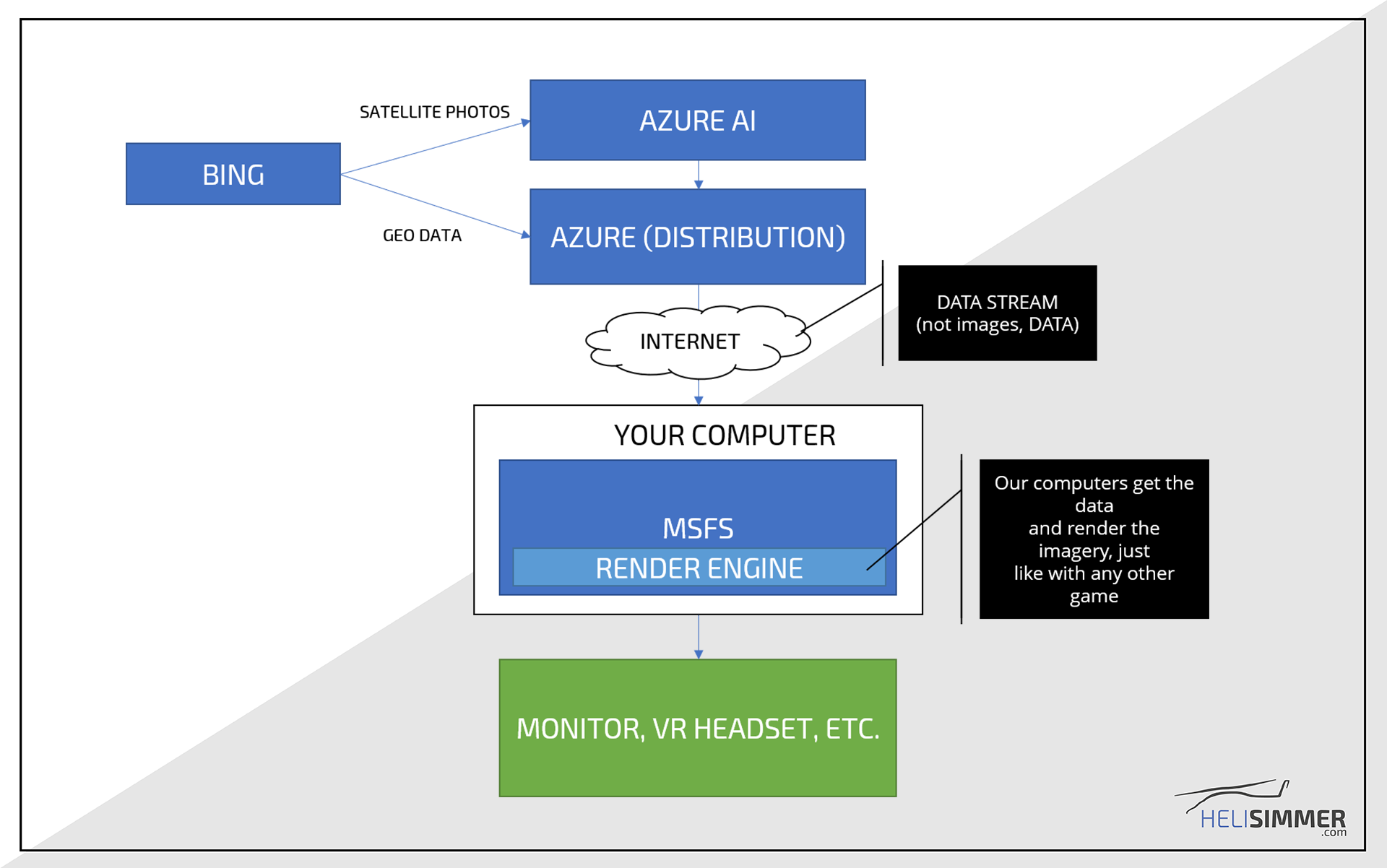Microsoft has been showing the next Microsoft Flight Simulator and one of the things the company, along with Asobo, has been telling us is that they are going to stream the geo data to our computers.
Now, in a world where YouTube, Twitch, Netflix and other services are very well-known by our users, and where companies such as Google are trying to push game streaming into the market, it’s quite understandable that the word “streaming” may cause some confusion in some simmer’s minds.
Browsing around the interwebs (and especially on social media) we can find things such as “the performance of Microsoft Flight Simulator will depend on your internet speed because the game is rendered on the cloud”, or “you can’t play offline because the game is streamed into your computer”.
A lot of these folks are picturing the sim running in Azure and the actual image being streamed to your computer.
All of the sudden, internet speed becomes serious business and graphics cards are less important because, well, again, the sim will run on someone else’s computer, right?
Well… Not really. That’s not what will happen.
So, what gives? What’s all this streaming thing we’ve been listening about?
Yes, Microsoft will stream stuff to our computers. But not imagery. Not a “video” of our sim. We will get stuff streamed from Azure, yes. But that thing is data. And, possibly, textures.
We will be downloading data regarding the geography of the region we are (or want to be) flying at. That data, which consists of the oceans, mountains, rivers, roads, buildings and everything else that makes the world will then be rendered by our computers.
Imagine that, like with Dropbox, Google Drive or Microsoft OneDrive we are accessing a remote hard drive where all the data is kept. Our computers take it as they need it and do their thing. It’s a very simplistic way of putting it, but that’s pretty much it.
What about all that Bing and Azure AI and whatnot?
Well, all this data comes originally from Bing and it’s processed by Azure AI. Azure AI “cleans” up textures, enhances and equalizes colors, fills in any gaps of information, removes shadows, etc.
We will then have access to high-quality textures and data, which will then be downloaded to our computers and rendered by our systems.
So, internet speed doesn’t count that much? What about the graphics cards?
“That much”? No. Will it count? Yes. But it’s not like you will have your experience completely ruined if you can’t watch a 4K movie with your current connection.
You may need a bit more time to get all the data to your computer – or use a medium-resolution scenery until you get all the HD stuff, but internet speed will not be a huge deterrent in your experience.
You will still need a good graphics card and CPU. I still advise you to get a nice gaming rig. That will still count. A lot.
How do I know if all this is true?
“Hey, how do I know you’re not making this up?”.
Well, first of all, as you probably know I have spoken to the development team myself and I asked them about some specifics (whatever they could give me). As a developer I immediately got interested about the technology behind it and I know folks would probably want to know more so that they can plan ahead.
Second, I validated what I just told you. The diagram you see above? I have sent that to someone inside Microsoft that told me that’s how it will work. It’s, obviously, oversimplified but it should give you a very nice overview of what Microsoft Flight Simulator’s streaming technology actually is.
I hope it helps. If you have any questions or doubts, please let me know in the comments section, below.








